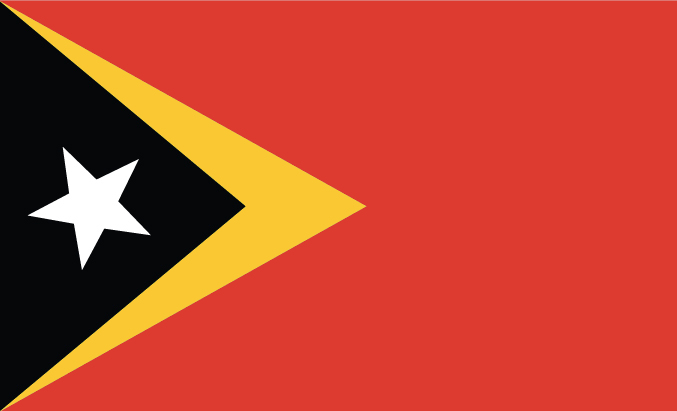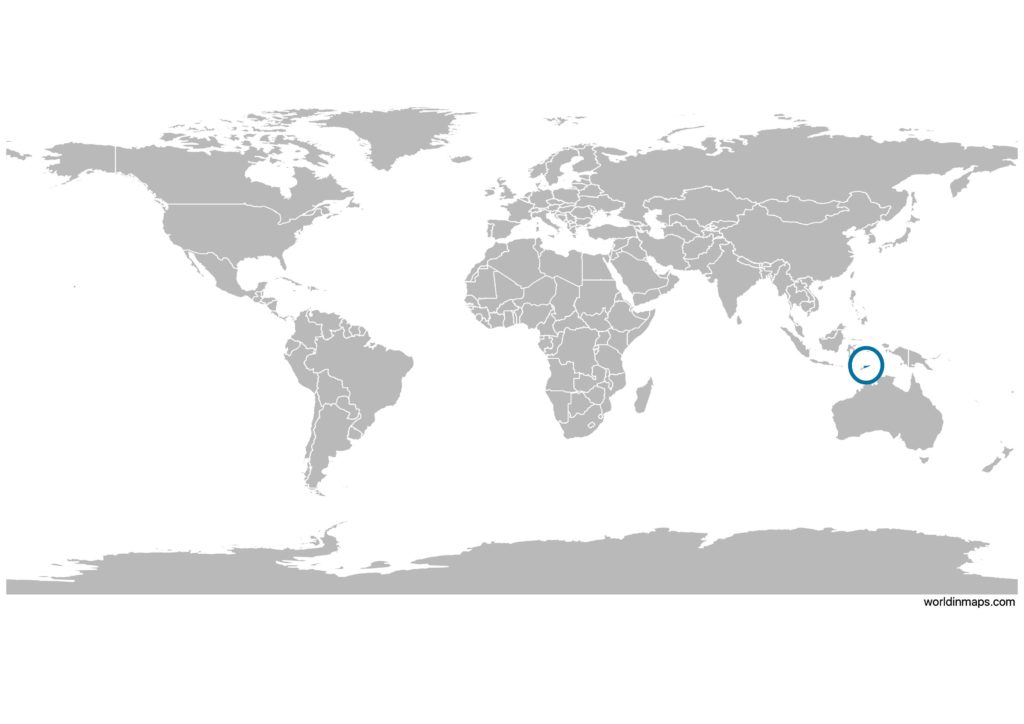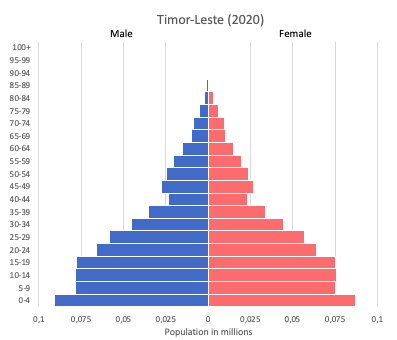Timor-Leste (East Timor)

| Government | |
| Name | Democratic Republic of Timor-Leste |
| Tetum | Repúblika Demokrátika Timór-Leste |
| Portuguese | República Democrática de Timor-Leste |
| Government type | semi-presidential republic |
| Capital | Dili (150,000) |
| Currency | United States dollar (USD) Indonesian rupiah (IDR) |
| People | |
| Population (2020) | 1,318,442 |
| Density of population | 78 P/km2 |
| Nationality | Timorese |
| Official languages | |
| Tetun | |
| Portuguese | |
| Ethnic groups | |
| Austronesian (Malayo-Polynesian) (includes Tetun, Mambai, Tokodede, Galoli, Kemak, Baikeno) | |
| Melanesian-Papuan (includes Bunak, Fataluku, Bakasai) | |
| small Chinese minority | |
| Religions (2015) | |
| Roman Catholic | 97.6% |
| Protestant / Evangelical | 2% |
| Muslim | 0.2% |
| other | 0.2% |
| Life expectancy (2020) | |
| Male | 67.6 years |
| Female | 71.1 years |
| Total population | 69.3 years (170th) |
| Homicides | |
| Total (2015) | 4.1 per 100,000 people (73rd) |
| Geography | |
| Land area | 14,874 km2 |
| water area | 0 km2 |
| total area | 14,874 km2 (160th) |
| Lowest point | |
| Timor Sea, Savu Sea, and Banda Sea | 0 m |
| Highest point | |
| Foho Tatamailau | 2,963 m |
| Land use (2011) | |
| Agricultural land | 25.1% |
| Arable land | 10.1% |
| Permanent crops | 4.9% |
| Permanent pasture | 10.1% |
| Forest | 49.1% |
| Other | 25.8% |
| Urbanization | |
| Urban population (2020) | 31.3% |
| Rate of urbanization | 3.35% annual rate of change (2015 – 2020) |
| Economy | |
| Labor force (2016) | 286,700 (164th) |
| Labor force by occupation (2013) | |
| Agriculture | 41% |
| Industry | 13% |
| Services | 45.1% |
| Unemployment rate (2014) | 4.4% (60th) |
| GDP (PPP) (estimate 2019) | |
| Total | $7.221 billion |
| Per capita | $5,561 |
| GDP (nominal) (estimate 2019) | |
| Total | $3.145 billion |
| Per capita | $2,422 |
| GDP by sector (estimate 2017) | |
| Agriculture | 9.1% |
| Industry | 56.7% |
| Services | 34.4% |
| Exports (2017) | $16.7 million (214th) |
| Exports partners | |
| NA | |
| Imports (2017) | $681.2 million (193rd) |
| Imports partners | |
| NA | |
Timor-Leste (East Timor) on the world map

Timor-Leste (East Timor) top 10 largest cities
- Dili (150,000)
- Maliana (22,000)
- Suai (21,539)
- Likisá (19,000)
- Aileu (17,356)
- Lospalos (17,186)
- Maubara (16,300)
- Baucau (16,000)
- Venilale (16,000)
- Ainaro (12,000)
Demography
Population pyramid

Age structure data
Estimate for 2020:
- 0-14 years: 39.96% (male 284,353/female 268,562)
- 15-24 years: 20.32% (male 142,693/female 138,508)
- 25-54 years: 30.44% (male 202,331/female 218,914)
- 55-64 years: 5.22% (male 34,956/female 37,229)
- 65 years and over: 4.06% (male 27,153/female 29,024)
Remark: the age structure of a population affects a nation’s key socioeconomic issues. Countries with young populations (high percentage under age 15) need to invest more in schools, while countries with older populations (high percentage ages 65 and over) need to invest more in the health sector. The age structure can also be used to help predict potential political issues. For example, the rapid growth of a young adult population unable to find employment can lead to unrest.
Population from 1950 to 2020
Source: United Nations, Department of Economic and Social Affairs, Population Division (2019). World Population Prospects 2019, Online Edition. Rev. 1.
Evolution of the life expectancy from 1960 to 2018
Source: World Development Indicators, The World Bank
Economy
Agriculture:
coffee, rice, corn, cassava (manioc, tapioca), sweet potatoes, soybeans, cabbage, mangoes, bananas, vanilla
Industries:
printing, soap manufacturing, handicrafts, woven cloth
Exports – commodities:
oil, coffee, sandalwood, marble
note: potential for vanilla exports
Imports – commodities:
food, gasoline, kerosene, machinery
Time zone and current time in Timor-Leste (East Timor)
Go to our interactive map to get the current time in Timor-Leste (East Timor)